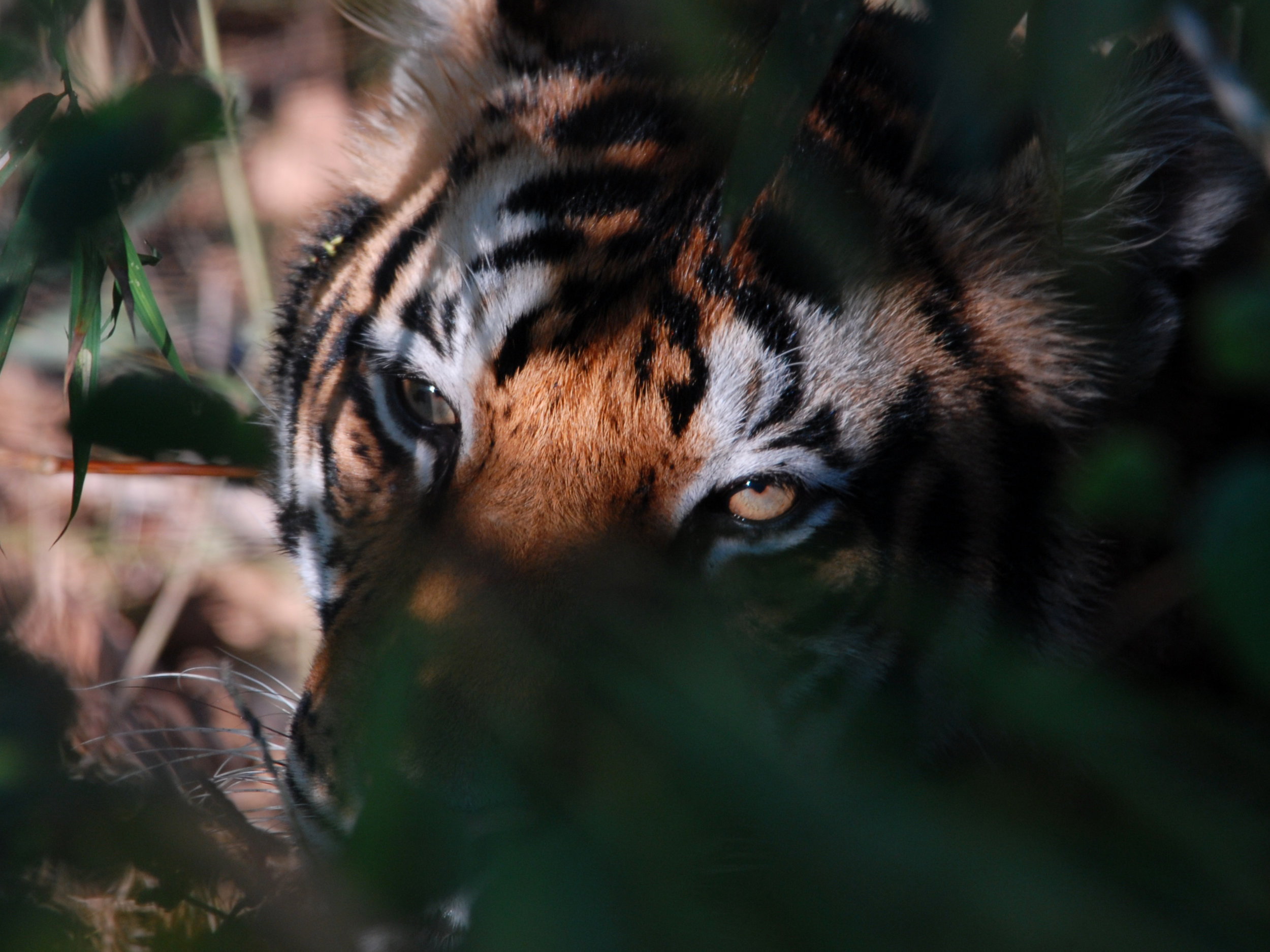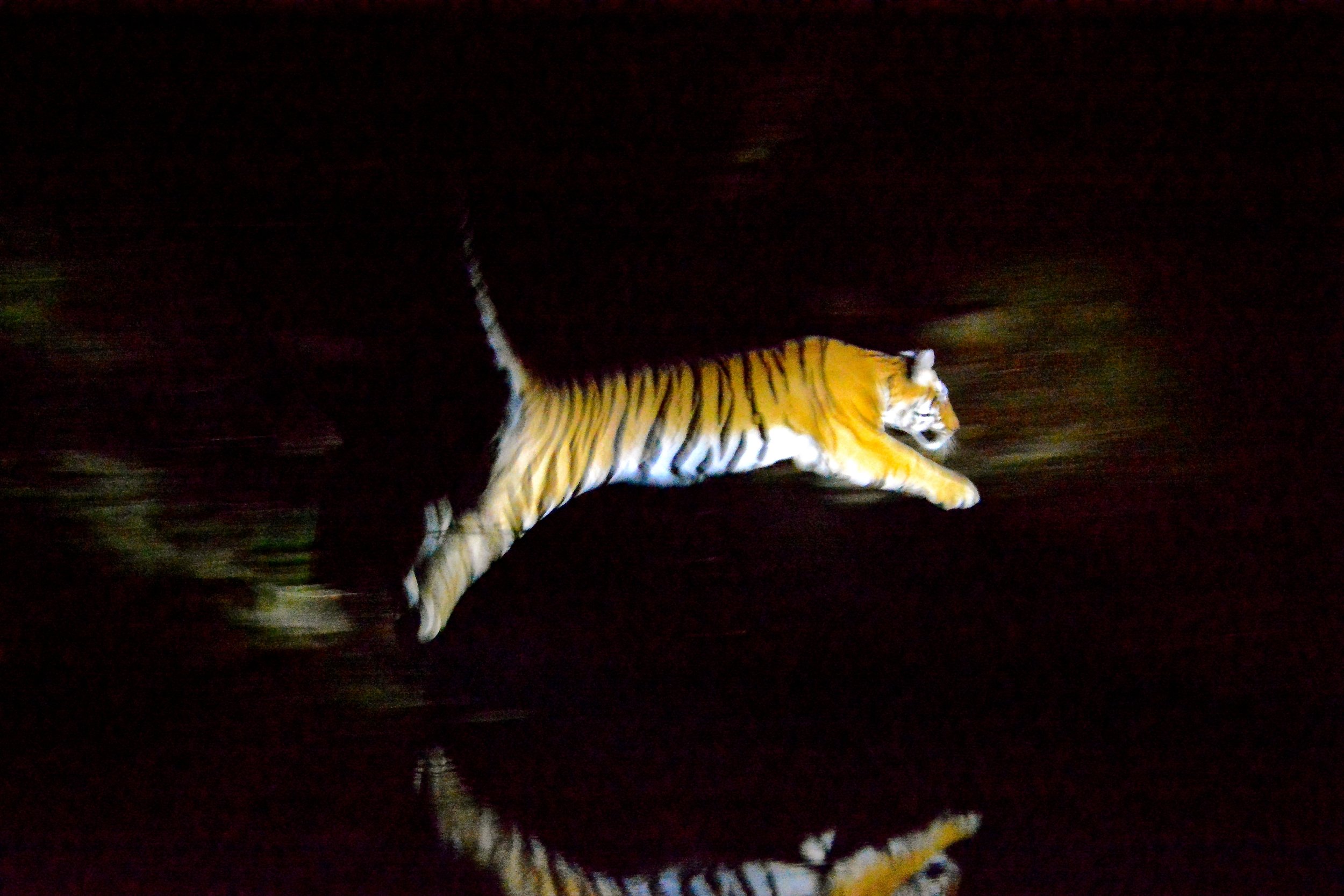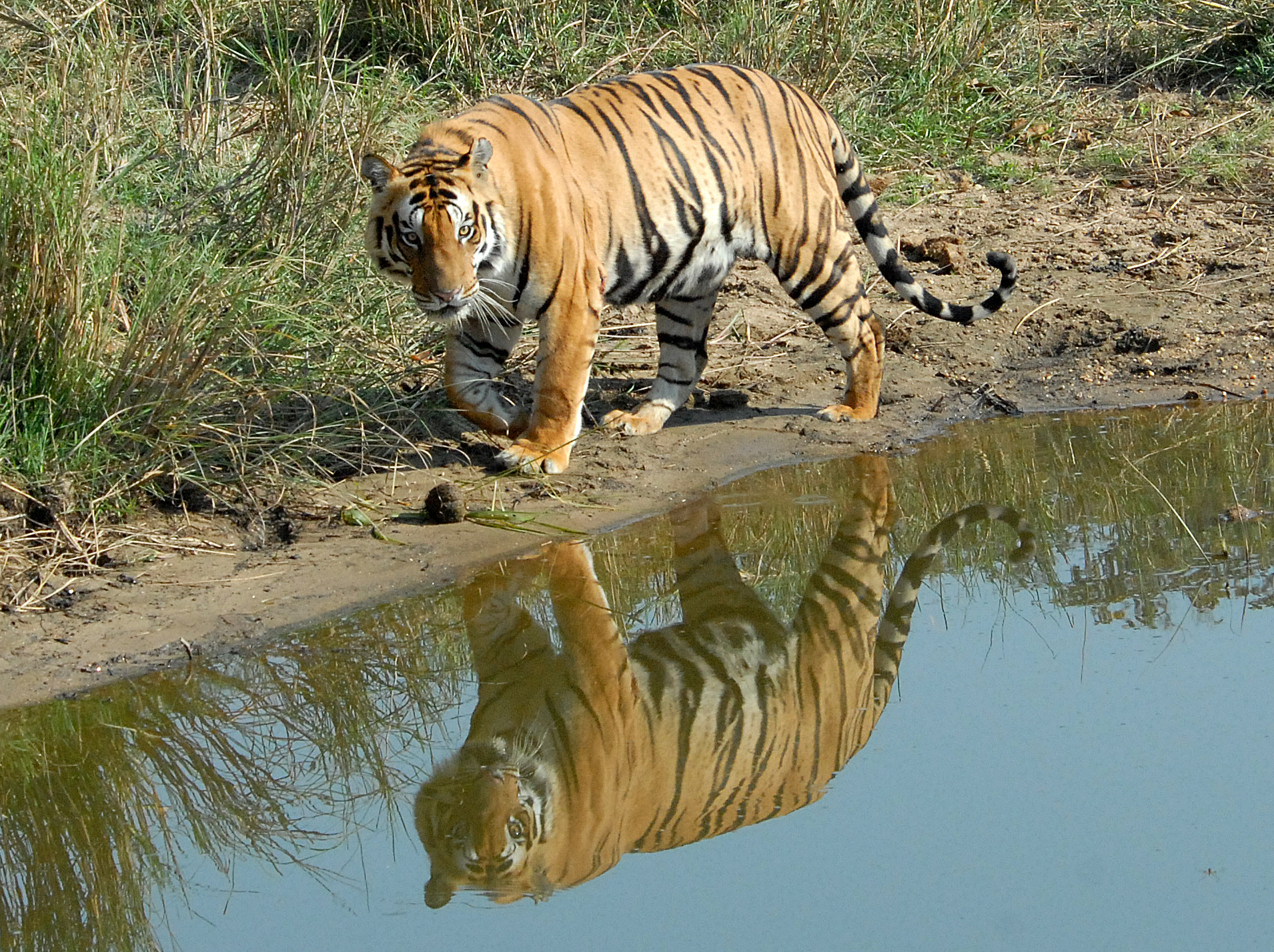

Tigers
Why save the tiger? Besides the tiger's incredible beauty, as an apex predator, the tiger is a fairly good barometer of the health of the entire ecosystem. If the forest vegetation isn't healthy, grazing mammals won't be healthy, and they won't be good food for this premier big cat. We are all -- human and animal -- connected in ways we are just beginning to understand. In fact, nations that neglect their natural environment are at risk for increased frequency and magnitude of natural disasters -- floods, droughts, landslides, earthquakes, and more. The tiger is worthy of preservation in and of his own right, but in addition, he is an excellent spokesman for the environment as a whole.
There are two basic approaches -- direct intervention and protecting the environment so the tiger can flourish on his own. India, through Project Tiger, has taken the second approach.
It's worked well. In 1973, when 9 nature reserves (including Kanha) were established, India had 1,800 tigers. Now, it has almost 4,000 and a global day (July 29), championed by Prime Minister Modi:
Tigers
Why save the tiger? Besides the tiger's incredible beauty, as an apex predator, the tiger is a fairly good barometer of the health of the entire ecosystem. If the forest vegetation isn't healthy, grazing mammals won't be healthy, and they won't be good food for this premier big cat. We are all -- human and animal -- connected in ways we are just beginning to understand. In fact, nations that neglect their natural environment are at risk for increased frequency and magnitude of natural disasters -- floods, droughts, landslides, earthquakes, and more. The tiger is worthy of preservation in and of his own right, but in addition, he is an excellent spokesman for the environment as a whole.
There are two basic approaches -- direct intervention and protecting the environment so the tiger can flourish on his own. India, through Project Tiger, has taken the second approach.
It's worked well. In 1973, when 9 nature reserves (including Kanha) were established, India had 1,800 tigers. Now, it has almost 4,000 and a global day (July 29), championed by Prime Minister Modi:
Thank you, anonymous (and brave!) videographer for this rare footage of 2 male tigers fighting for territory in the Kanha Nature Reserve, India! ‘Yet another piece of evidence that the Golden Triangle model of conservation works. Tigers, environment, and people are all thriving, and we are seeing more tigers.
News Flash: 4 Unemployed Tigers During COVID-19 Tourism Shut-Down Begin Street Loitering!
Officials are concerned that public drinking and cat-calling of passing females will be next. Officers are being summoned to speak with the assailants. No volunteers have yet been sourced.
Video Source: Anonymous - Thank You!
Location: Kanha Nature Reserve Gate, India
News Flash: more Street Loitering
Late at night, when there's no traffic, this big boy decided to have a rest on the roadway, cooled by monsoon rains. Thank you, anonymous videographer!
So what does the tiger need now? Two things will help today's tiger: prevent poaching, and take human stress off the tiger's environment. We contribute to these ends through economic development, use of eco-technologies, and awareness for policymakers and everyone with our whitepaper series, newspaper articles, and books (available on Amazon):
We’re thrilled to announce that thanks to R. Srinivasan at our printing sponsor, ITC Ltd., photos from The Tiger Center and our message of conservation have been included on the backs of ITC workbooks. These books are used by children all over India to do their school work, and now the workbooks also promote a very powerful message of conservation. In fact, 2.5 million of those messages have been distributed, and we pray that the world’s elders are led by children who care about conserving tigers and environment for their generation and beyond.
It’s working! Kanha, India is now the best place in the world to see tigers in the wild — even from the comfort of your jeep on the way to Kanha:
Fast Facts:
"Traders pay poachers 2,000 rupees (US$56) for a dead tiger.
That's almost half of what a typical farmer makes in a year.
The traders can then sell the tiger skin for 50,000 to 80,000 rupees
(US$1,390 to US$2,220), and the bones for up to 120,000 rupees (US$3,330).
Such tiger poaching is one of the gravest threats facing wild tigers today....
Nowadays, it's estimated that one tiger is poached in India every day."
(www.mnzoo.com/education/ticadventures/ta4text/a3.htm)








